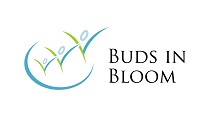RDSP REDEMPTION RULES
How do you take the money out?
January 2021
Audrey Veltri, IG Wealth Management
RDSP’s are arguably the best method of saving and fortifying long-term financial security for persons living with a disability in Canada. The account created in 2008 is just over a decade old and we are only just beginning to see the positive impacts within the community. Awareness is beginning to cultivate and information on how to access and effectively structure contributions, grants and bonds is beginning to spread, albeit there is still much work to be done.
Naturally there is often a focus on how to fund the plan, but I find little attention is paid on how it will pay-out, be received and support the beneficiary. Beneficiaries, who in many cases, might not have the capacity to understand nor manage these payments. Therefore, it is important that when we establish these accounts, we also explore the short, mid and long-term outcomes and understand how this account will provide future support- because it comes with some rules, many rules in fact.
The first of which is the penalty for early redemptions which CRA calls a repayment obligation. It is quite severe. If you redeem funds within the ‘Assistance Holdback Amount’ (AHA) period, you could be required to pay back $3 of grants/bonds for every single dollar redeemed. The AHA period refers to a 10-year period in which any grants or bonds have been paid into the account.
Here is an example:
Sara has an RDSP which was opened in 2008, so its been open for 13 years. In each year her parents fully funded the plan with annual contributions of $1,500.00 which were matched with $3,500.00 in annual grants. She was not eligible for the bond. The total amount of grant in the account is $45,500.00 ($3,500 X 13). The Assistance Holdback amount is the value of all grants paid in the last 10-year period or $35,000.00 ($3,500 X 10). If in this year Sara needed some funds for a medical need and her parents took $3,000.00 from the RDSP to fund this need- they would cause a repayment obligation of $9,000.00 ($3 for each $1 they redeemed or $3,000.00 X $3 = $9000.00) In total they would create a $12,000.00 redemption from the RDSP to pay for a $3,000.00 bill.
So, while technically you are permitted to take funds from an RDSP at any time, it is not advisable to redeem funds until 10 years after the last dollar of bond or grant has been contributed. Therefore, it is important to structure your contributions, grants and bonds in such a manner that they agree with both the timing requirements and the financial needs of the beneficiary.
The next rule is called the 28-year rule. Once the beneficiary reaches the age of 28 and any year up until they are 59, they have the right to request a DAP, Disability Assistance Payment from their RDSP; without the consent of the holder. Essentially, a DAP is a one-time payment from an RDSP. This is something to be conscious of when a beneficiary is aware that they are the direct beneficiary of an RDSP, that funds are available to them, and they have ability to request them. It is also important to note that DAP’s requested by the beneficiary can also result in repayment obligations should they occur within the AHA period. To protect the RDSP from exposure to this rule, parents and caregivers should consider the defense benefits of legal and formal trusteeship orders.
Here is an example:
Eric has a neurological disability but is high-functioning and somewhat able to manage his finances. He becomes aware that his parents have an RDSP account for him and at age 29 he decides he wants to redeem some money. Without his parent’s consent Eric makes a request for a DAP in the amount of $4,000.00 for a brand-new gaming computer complete with desk and gaming chair. This $4,000.00 redemption occurs during a time when the AHA period is still in effect and thus causes a repayment obligation of $12,000.00 ($4,000 X $3). As a result, his gaming system actually cost him $16,000.00!
There are however restrictions on the total allowable amount of a DAP. These restrictions exist for all DAP’s, those requested by the beneficiary and/or the holder. The first rule for a DAP is that it would be disallowed should the redemption result in the RDSP value falling below the assistance holdback amount. If this happened, then the RDSP would not have sufficient funds to satisfy the repayment obligation. There is also a dollar-limit rule for a DAP this ensures that the total of all DAP’s requested in any one given year are below the greater of; the DAP formula or 10% of the fair market value of the RDSP at the beginning of the year.
When a beneficiary turns 60 the RDSP must begin to pay a minimum amount each year. This prescribed payment is called an LDAP or Lifetime Disability Assistance Payment. LDAP’s are regulated by a formula that is applied to the fair market value of the account at the beginning of each year. LDAP’s can be paid out at regular intervals, monthly, quarterly or annually. Once LDAP’s begin to pay out, they must continue until the RDSP is terminated or the beneficiary passes away.
There is an additional rule that is applied to LDAP payments if the RDSP is what CRA refers to as a PGAP, Primarily Government Assisted Plan. A PGAP occurs in a year when the total value of all government grant and bond payments is more that the total value of private contributions. If this is the case the total annual LDAP payment must not exceed the greater of; the LDAP formula and 10% of the account. For example, if you had an PGAP RDSP with a fair market value of $200,000.00 on January 1, the maximum dollar amount you could take out in that year would be around $20,000.00.
Now I must also tell you that, as with almost all rules, there are exceptions. Exceptions for the redemption rules exist if the RDSP is classified as a specified RDSP. While this is an article all in itself; to summarize a specified RDSP is when the beneficiary of the RDSP is experiencing a shortened life expectancy. Should this be the case special rules for taking the money out apply, with many of the above restrictions loosening.
As you can see RDSP’s can be complex. From applying for grants, funding the plan, to redeeming they require attention and planning to ensure they will adequately and effectively meet the needs of the beneficiary. But even with all the rules and regulations they truly are the best method of saving for a secure future and when structured and managed properly, they are an incredible solution to ensure the well-being of Canadians living with a disability.
If you or someone you care about has questions about this article or could benefit from disability supports and planning for the future, we are here to help.

We provide guidance to families supporting dependents with a disability. We ensure families have effective access to all available financial and government programs and implement strategies to ensure that we protect these supports through periods of transition and at all life stages. We create solutions so families can enjoy today, embrace tomorrow and secure a comfortable, safe and healthy future for the whole family.

